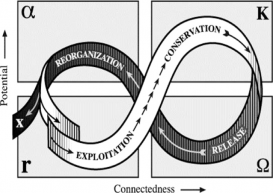My project's aim is to substantiate concepts such as “sustainability” and “resilience” in China’s historical context. My focus is to test the “adaptive cycle” model proposed by ecologist C. S. Holling in 1973, by analyzing two sets of data. One relates to human conflicts over local natural resources (in the Jianghan plain or on a broader scale), the other to the changes in the population and type of species from a long-term perspective (on the same scale). I am especially interested in testing the hypothesis that the conflicts revolving resources in nineteenth-century China had reached a point at which “fast and small events overwhelm small and large ones, and can cascade to higher, slower levels” (Holling 2001), which signifies the onset of an ecological crisis. This project not only contributes to a further understanding of the destruction and reorganization of socio-ecological systems in China’s past and present, but also offers insights into the use of an interdisciplinary approach to analyzing China’s environmental history.

C. S. Holling’s "adaptive cycle" diagram shows the four phases of adaptation along the connectedness and potential dimensions. Lance H. Gunderson and C. S. Holling, Panarchy: Understanding Transformations in Human and Natural Systems (Island Press, 2002), 34.
Project
(2017)
